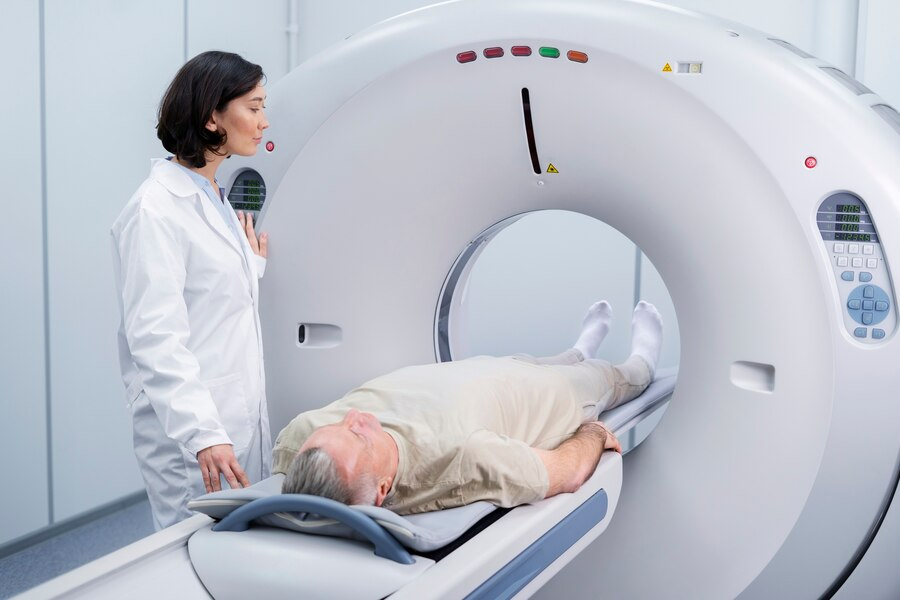
Facing a cancer diagnosis is never easy, and for many patients, the journey comes with unexpected challenges. For many, these challenges become even more complex when cancer spreads to other body parts, such as the spine. Metastatic spine cancer, a condition where cancer cells spread from different regions to the spinal cord or vertebrae, affects a significant portion of cancer patients. We spoke to our expert Dr Darshana Rane, Consultant, Medical Oncology, HCG Cancer Center, Borivali, who explained how metastatic spine cancer develops, diagnostic tools that aid in identifying it, and treatment options available.
Table of Content:-
What Is Metastatic Spine Cancer?

“Spinal metastases, which also refer to metastatic spine cancer, are cancer cells that spread from other body parts to the spinal cord or spine. This condition occurs in 30-70% of cancer patients at some time during their cancer treatment. Among all the cancers, lung, prostate, and breast are most likely to affect the vertebral column through metastases,” said Dr Rane.
The spine is made up of a number of tissues that run from the neck down to the area around the lower abdomen known as the pelvis. Tumours can develop in any of these forms of body tissue. The signs and symptoms associated with spinal cancer and spinal tumours vary depending on the type and location of the tumour.
According to the Barrow Neurological Institute, metastatic spinal tumours, also referred to as secondary spinal tumours, develop when cancer spreads to the spine from other parts of the body. In contrast, tumours that originate within the spine itself are called primary spinal tumours. Metastatic spine cancer can affect any segment of the spine, but it is most commonly found in the lumbar region.
Also Read: Lung And Colon Cancers Linked To Airborne Microplastics, Says Study: Tips To Mitigate Risks
Recognising Symptoms of Spinal Cancer
Common symptoms of spinal cancer and spinal tumours include:

- Persistent back or neck pain
- Changes in sensation or sensitivity in the arms or legs
- Difficulty or changes in moving the arms or legs
- Altered bowel and bladder habits
“With the large development of the tumour, the spinal cord may bend inwards, leading to the formation of conditions, such as kyphosis or scoliosis. In some cases, spinal tumours can compress the spinal cord, leading to neurological symptoms,” said Dr Rane.
These symptoms can progress and become severe in the future if no attention is paid to them leading to permanent disabilities. It is, therefore, wise to consult a doctor if you are feeling any spinal effects that might be a result of spinal cancer or spinal tumours.
Diagnosing Spinal Cancer
Accurate diagnosis of spinal cancer requires a combination of clinical history and advanced diagnostic tools. Common diagnostic methods include:

- Magnetic Resonance Imaging (MRI): Used to visualise the spine and detect abnormalities.
- Positron Emission Tomography Computed Tomography (PET-CT): Identifies cancerous growths and assesses their spread.
- Biopsy: A tissue sample may be taken to confirm the diagnosis in some cases.
Imaging tests are particularly valuable for pinpointing the location and extent of the tumour, aiding in the development of an effective treatment plan.
Also Read: Spine Cancer: Symptoms, Risk And Treatment
Treatment Options for Spinal Cancer
The choice of treatment for spinal cancer depends on factors, such as the type of tumour, its stage, and any accompanying conditions. Dr Rane listed the common treatment modalities as follows:

- Chemotherapy and Radiation Therapy: Used to shrink or control the tumour.
- Surgery: In cases where feasible, surgical removal of the tumour may be performed. Surgery may also be necessary to decompress the spinal cord or stabilise the vertebral column.
- Proton Therapy: An advanced radiation technique that targets tumours while minimising damage to surrounding tissues.
- Supportive Treatments: These include analgesics for pain relief, corticosteroids to reduce inflammation, and medications that promote bone remodelling.
A multidisciplinary approach involving oncologists, neurologists, and orthopaedic surgeons often provides the best outcomes for patients.
Importance of Timely Diagnosis and Management
Timely diagnosis of the disease and its prompt management can greatly enhance the patient’s prognosis and daily functioning. This is one of the reasons that make it important that one employs the service of a health care provider who can recommend an appropriate treatment plan that will suit the patient.
Bottomline
Dr Rane concluded, “Knowledge and awareness of spinal cancer symptoms empower patients to seek medical attention promptly. Early detection and appropriate treatment can significantly improve daily functioning and overall well-being. Additionally, supportive care, including physical therapy and counselling, is vital in helping patients manage the physical and emotional challenges associated with the condition.”
[Disclaimer: This article contains information provided by an expert and is for informational purposes only. Hence, we advise you to consult your professional if you are dealing with any health issues to avoid complications.]
Also watch this video
How we keep this article up to date:
We work with experts and keep a close eye on the latest in health and wellness. Whenever there is a new research or helpful information, we update our articles with accurate and useful advice.
Current Version